Watched August 13 - 19, 2007: Shimizu, Bunuel and Lee
Jirô monogatari / Jiro's Story (Hiroshi Shimizu, 1955)
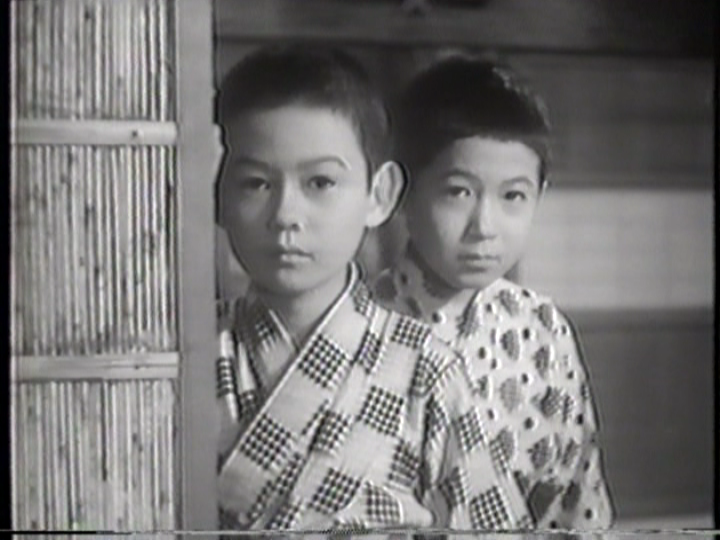 This Shimizu's film was the second (of four, so far) screen adaptation of a semi-autobiographical book (set in the 1890s) by noted educator Kojin Shimomura. It depicts the travails of Jiro (Yukihiro Ozawa, through most of the film), the youngest son of a well-to-do and eminent provincial merchant family. Due to the illness of his mother (Ranko Hanai) after he was born, he was sent to live with the family of his nurse (Yuko Mochizuki).
This Shimizu's film was the second (of four, so far) screen adaptation of a semi-autobiographical book (set in the 1890s) by noted educator Kojin Shimomura. It depicts the travails of Jiro (Yukihiro Ozawa, through most of the film), the youngest son of a well-to-do and eminent provincial merchant family. Due to the illness of his mother (Ranko Hanai) after he was born, he was sent to live with the family of his nurse (Yuko Mochizuki). 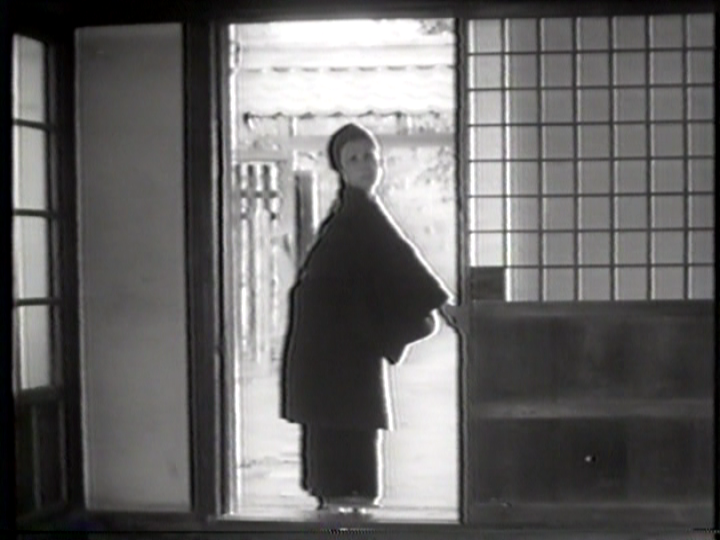 At age seven or so, he is called home to rejoin his family (parents, siblings, grandparents), who are all virtual strangers to him. He finds it hard to adjust to his new circumstances -- and escapes to his old home. He is also finally introduced to the joys of attending school. The film traces the vicissitudes of the family -- the illness and death of the grandfather, bankruptcy of the family business, death of the mother (to whom Jiro eventually became quite attached) and the re-marriage of his father to a new wife (Michiyo Kogure).
At age seven or so, he is called home to rejoin his family (parents, siblings, grandparents), who are all virtual strangers to him. He finds it hard to adjust to his new circumstances -- and escapes to his old home. He is also finally introduced to the joys of attending school. The film traces the vicissitudes of the family -- the illness and death of the grandfather, bankruptcy of the family business, death of the mother (to whom Jiro eventually became quite attached) and the re-marriage of his father to a new wife (Michiyo Kogure).
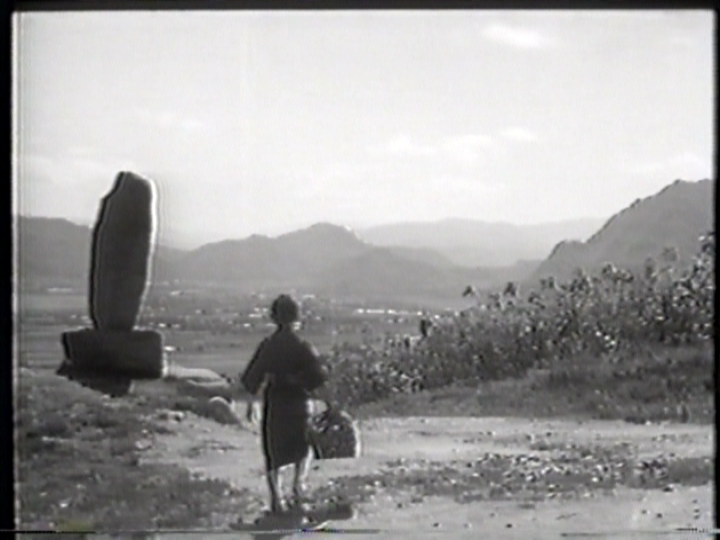 As usual, Shimizu manages to get realistic and unaffected performances out of his child cast members. And the cinematography by longtime Naruse collaborator Hiroshi Suzuki is excellent. Like many other Shimizu films, this one deserves to be far better known.
As usual, Shimizu manages to get realistic and unaffected performances out of his child cast members. And the cinematography by longtime Naruse collaborator Hiroshi Suzuki is excellent. Like many other Shimizu films, this one deserves to be far better known.
More screen shots:
http://i9.photobucket.com/albums/a59/mkerpan/shimizu/jiro01.png
http://i9.photobucket.com/albums/a59/mkerpan/shimizu/jiro02.png
http://i9.photobucket.com/albums/a59/mkerpan/shimizu/jiro04.png
http://i9.photobucket.com/albums/a59/mkerpan/shimizu/jiro05.png
http://i9.photobucket.com/albums/a59/mkerpan/shimizu/jiro06.png
http://i9.photobucket.com/albums/a59/mkerpan/shimizu/jiro08.png
http://i9.photobucket.com/albums/a59/mkerpan/shimizu/jiro09.png
http://i9.photobucket.com/albums/a59/mkerpan/shimizu/jiro10.png
http://i9.photobucket.com/albums/a59/mkerpan/shimizu/jiro11.png
http://i9.photobucket.com/albums/a59/mkerpan/shimizu/jiro12.png
http://i9.photobucket.com/albums/a59/mkerpan/shimizu/jiro14.png
http://i9.photobucket.com/albums/a59/mkerpan/shimizu/jiro15.png
http://i9.photobucket.com/albums/a59/mkerpan/shimizu/jiro16.png
http://i9.photobucket.com/albums/a59/mkerpan/shimizu/jiro17.png
http://i9.photobucket.com/albums/a59/mkerpan/shimizu/jiro18.png
http://i9.photobucket.com/albums/a59/mkerpan/shimizu/jiro19.png
http://i9.photobucket.com/albums/a59/mkerpan/shimizu/jiro20.png
La Voie lactée / The Milky Way (Luis Buñuel, 1969)
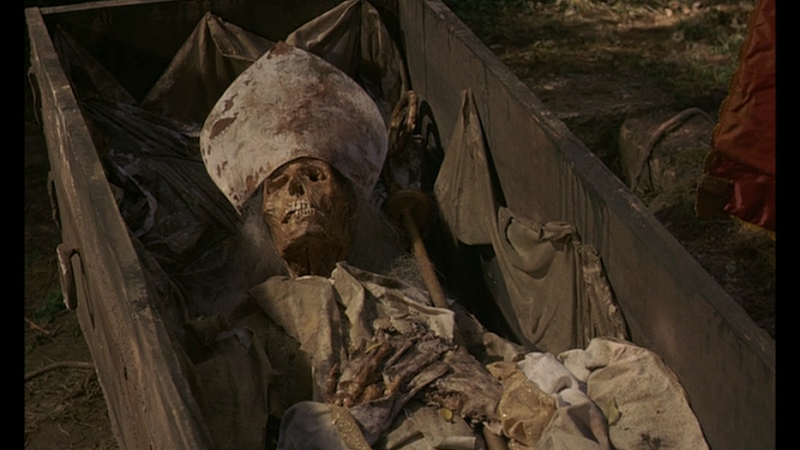 I first saw this film earlier this year -- and loved it then, despite the fact that the version I saw was a copy of a panned and scanned video. Seeing it again, in the form of the new Criterion DVD, I liked it even more.
I first saw this film earlier this year -- and loved it then, despite the fact that the version I saw was a copy of a panned and scanned video. Seeing it again, in the form of the new Criterion DVD, I liked it even more. 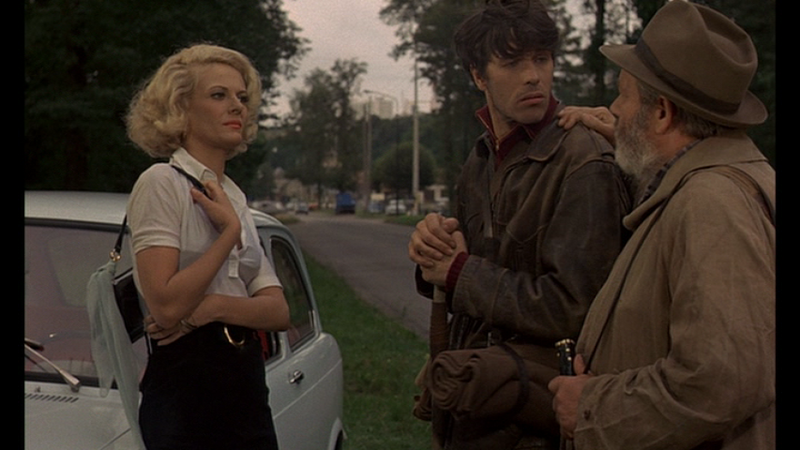 Needless to say, this new version represents a major improvement. I have nothing new to say about the film itself, but would like to share some screen shots from this new and improved incarnation:
Needless to say, this new version represents a major improvement. I have nothing new to say about the film itself, but would like to share some screen shots from this new and improved incarnation:
http://i9.photobucket.com/albums/a59/mkerpan/bunuel/milky01.png
http://i9.photobucket.com/albums/a59/mkerpan/bunuel/milky02.png
http://i9.photobucket.com/albums/a59/mkerpan/bunuel/milky03.png
http://i9.photobucket.com/albums/a59/mkerpan/bunuel/milky04.png
http://i9.photobucket.com/albums/a59/mkerpan/bunuel/milky05.png
http://i9.photobucket.com/albums/a59/mkerpan/bunuel/milky06.png
http://i9.photobucket.com/albums/a59/mkerpan/bunuel/milky07.png
http://i9.photobucket.com/albums/a59/mkerpan/bunuel/milky08.png
http://i9.photobucket.com/albums/a59/mkerpan/bunuel/milky09.png
http://i9.photobucket.com/albums/a59/mkerpan/bunuel/milky10.png
http://i9.photobucket.com/albums/a59/mkerpan/bunuel/milky11.png
http://i9.photobucket.com/albums/a59/mkerpan/bunuel/milky12.png
http://i9.photobucket.com/albums/a59/mkerpan/bunuel/milky14.png
http://i9.photobucket.com/albums/a59/mkerpan/bunuel/milky15.png
The Grace Lee Project (Grace Lee, 2005)
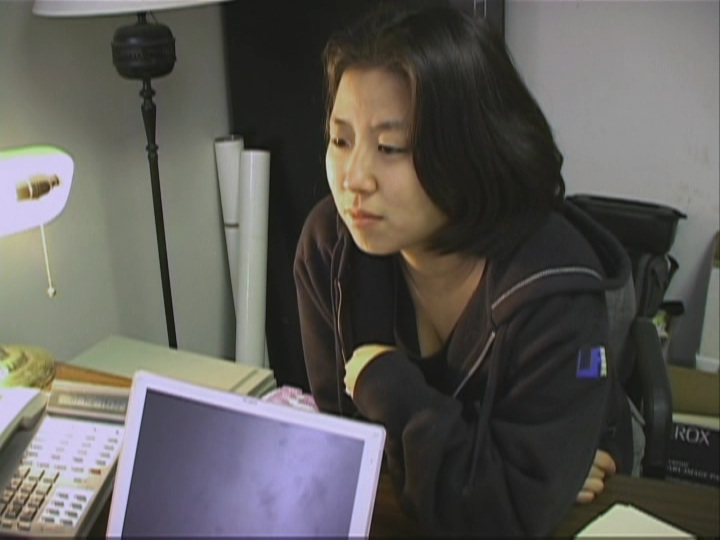 When Korean-American film maker Grace Lee was growing up in the middle of America, she thought she (and her name) was unique. But, on going off to college, she discovered there were lots of Grace Lees. Everyone seemed to know have someone of that name -- and most of them seemed to have been hard-working, serious-minded, piano-playing over-achievers.
When Korean-American film maker Grace Lee was growing up in the middle of America, she thought she (and her name) was unique. But, on going off to college, she discovered there were lots of Grace Lees. Everyone seemed to know have someone of that name -- and most of them seemed to have been hard-working, serious-minded, piano-playing over-achievers. 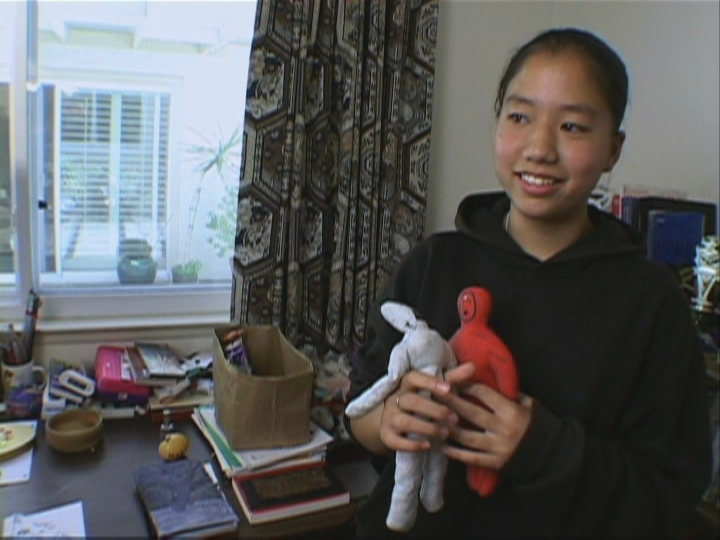 Consequently, Grace Lee (the director) set out on a quest to find out what "Grace Lee" was really like -- looking for as many other women of that name as she could find (in part relying on a website she set up). As it turns out, many of the Grace Lees she found were not entirely unlike the stereotype. Nonetheless, none fit the mold completely.
Consequently, Grace Lee (the director) set out on a quest to find out what "Grace Lee" was really like -- looking for as many other women of that name as she could find (in part relying on a website she set up). As it turns out, many of the Grace Lees she found were not entirely unlike the stereotype. Nonetheless, none fit the mold completely. 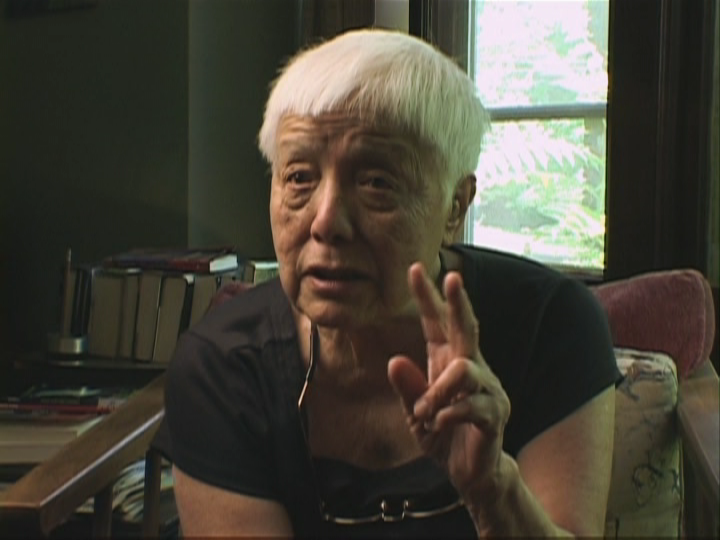 Of all those she found , her apparent favorite (and definitely mine) was an 80-something Chinese-American woman who had worked as a social activist in the Detroit area ever since her graduation from college. The middle section of this film (where she looks at two Grace Lees involved with Christian evangelism) drags just a bit -- but overall this quirky documentary is quite engaging. Now available on DVD (for home video purposes -- as well as institutional use and exhibition).
Of all those she found , her apparent favorite (and definitely mine) was an 80-something Chinese-American woman who had worked as a social activist in the Detroit area ever since her graduation from college. The middle section of this film (where she looks at two Grace Lees involved with Christian evangelism) drags just a bit -- but overall this quirky documentary is quite engaging. Now available on DVD (for home video purposes -- as well as institutional use and exhibition).
 This Shimizu's film was the second (of four, so far) screen adaptation of a semi-autobiographical book (set in the 1890s) by noted educator Kojin Shimomura. It depicts the travails of Jiro (Yukihiro Ozawa, through most of the film), the youngest son of a well-to-do and eminent provincial merchant family. Due to the illness of his mother (Ranko Hanai) after he was born, he was sent to live with the family of his nurse (Yuko Mochizuki).
This Shimizu's film was the second (of four, so far) screen adaptation of a semi-autobiographical book (set in the 1890s) by noted educator Kojin Shimomura. It depicts the travails of Jiro (Yukihiro Ozawa, through most of the film), the youngest son of a well-to-do and eminent provincial merchant family. Due to the illness of his mother (Ranko Hanai) after he was born, he was sent to live with the family of his nurse (Yuko Mochizuki).  At age seven or so, he is called home to rejoin his family (parents, siblings, grandparents), who are all virtual strangers to him. He finds it hard to adjust to his new circumstances -- and escapes to his old home. He is also finally introduced to the joys of attending school. The film traces the vicissitudes of the family -- the illness and death of the grandfather, bankruptcy of the family business, death of the mother (to whom Jiro eventually became quite attached) and the re-marriage of his father to a new wife (Michiyo Kogure).
At age seven or so, he is called home to rejoin his family (parents, siblings, grandparents), who are all virtual strangers to him. He finds it hard to adjust to his new circumstances -- and escapes to his old home. He is also finally introduced to the joys of attending school. The film traces the vicissitudes of the family -- the illness and death of the grandfather, bankruptcy of the family business, death of the mother (to whom Jiro eventually became quite attached) and the re-marriage of his father to a new wife (Michiyo Kogure). As usual, Shimizu manages to get realistic and unaffected performances out of his child cast members. And the cinematography by longtime Naruse collaborator Hiroshi Suzuki is excellent. Like many other Shimizu films, this one deserves to be far better known.
As usual, Shimizu manages to get realistic and unaffected performances out of his child cast members. And the cinematography by longtime Naruse collaborator Hiroshi Suzuki is excellent. Like many other Shimizu films, this one deserves to be far better known.More screen shots:
http://i9.photobucket.com/albums/a59/mkerpan/shimizu/jiro01.png
http://i9.photobucket.com/albums/a59/mkerpan/shimizu/jiro02.png
http://i9.photobucket.com/albums/a59/mkerpan/shimizu/jiro04.png
http://i9.photobucket.com/albums/a59/mkerpan/shimizu/jiro05.png
http://i9.photobucket.com/albums/a59/mkerpan/shimizu/jiro06.png
http://i9.photobucket.com/albums/a59/mkerpan/shimizu/jiro08.png
http://i9.photobucket.com/albums/a59/mkerpan/shimizu/jiro09.png
http://i9.photobucket.com/albums/a59/mkerpan/shimizu/jiro10.png
http://i9.photobucket.com/albums/a59/mkerpan/shimizu/jiro11.png
http://i9.photobucket.com/albums/a59/mkerpan/shimizu/jiro12.png
http://i9.photobucket.com/albums/a59/mkerpan/shimizu/jiro14.png
http://i9.photobucket.com/albums/a59/mkerpan/shimizu/jiro15.png
http://i9.photobucket.com/albums/a59/mkerpan/shimizu/jiro16.png
http://i9.photobucket.com/albums/a59/mkerpan/shimizu/jiro17.png
http://i9.photobucket.com/albums/a59/mkerpan/shimizu/jiro18.png
http://i9.photobucket.com/albums/a59/mkerpan/shimizu/jiro19.png
http://i9.photobucket.com/albums/a59/mkerpan/shimizu/jiro20.png
La Voie lactée / The Milky Way (Luis Buñuel, 1969)
 I first saw this film earlier this year -- and loved it then, despite the fact that the version I saw was a copy of a panned and scanned video. Seeing it again, in the form of the new Criterion DVD, I liked it even more.
I first saw this film earlier this year -- and loved it then, despite the fact that the version I saw was a copy of a panned and scanned video. Seeing it again, in the form of the new Criterion DVD, I liked it even more.  Needless to say, this new version represents a major improvement. I have nothing new to say about the film itself, but would like to share some screen shots from this new and improved incarnation:
Needless to say, this new version represents a major improvement. I have nothing new to say about the film itself, but would like to share some screen shots from this new and improved incarnation:http://i9.photobucket.com/albums/a59/mkerpan/bunuel/milky01.png
http://i9.photobucket.com/albums/a59/mkerpan/bunuel/milky02.png
http://i9.photobucket.com/albums/a59/mkerpan/bunuel/milky03.png
http://i9.photobucket.com/albums/a59/mkerpan/bunuel/milky04.png
http://i9.photobucket.com/albums/a59/mkerpan/bunuel/milky05.png
http://i9.photobucket.com/albums/a59/mkerpan/bunuel/milky06.png
http://i9.photobucket.com/albums/a59/mkerpan/bunuel/milky07.png
http://i9.photobucket.com/albums/a59/mkerpan/bunuel/milky08.png
http://i9.photobucket.com/albums/a59/mkerpan/bunuel/milky09.png
http://i9.photobucket.com/albums/a59/mkerpan/bunuel/milky10.png
http://i9.photobucket.com/albums/a59/mkerpan/bunuel/milky11.png
http://i9.photobucket.com/albums/a59/mkerpan/bunuel/milky12.png
http://i9.photobucket.com/albums/a59/mkerpan/bunuel/milky14.png
http://i9.photobucket.com/albums/a59/mkerpan/bunuel/milky15.png
The Grace Lee Project (Grace Lee, 2005)
 When Korean-American film maker Grace Lee was growing up in the middle of America, she thought she (and her name) was unique. But, on going off to college, she discovered there were lots of Grace Lees. Everyone seemed to know have someone of that name -- and most of them seemed to have been hard-working, serious-minded, piano-playing over-achievers.
When Korean-American film maker Grace Lee was growing up in the middle of America, she thought she (and her name) was unique. But, on going off to college, she discovered there were lots of Grace Lees. Everyone seemed to know have someone of that name -- and most of them seemed to have been hard-working, serious-minded, piano-playing over-achievers.  Consequently, Grace Lee (the director) set out on a quest to find out what "Grace Lee" was really like -- looking for as many other women of that name as she could find (in part relying on a website she set up). As it turns out, many of the Grace Lees she found were not entirely unlike the stereotype. Nonetheless, none fit the mold completely.
Consequently, Grace Lee (the director) set out on a quest to find out what "Grace Lee" was really like -- looking for as many other women of that name as she could find (in part relying on a website she set up). As it turns out, many of the Grace Lees she found were not entirely unlike the stereotype. Nonetheless, none fit the mold completely.  Of all those she found , her apparent favorite (and definitely mine) was an 80-something Chinese-American woman who had worked as a social activist in the Detroit area ever since her graduation from college. The middle section of this film (where she looks at two Grace Lees involved with Christian evangelism) drags just a bit -- but overall this quirky documentary is quite engaging. Now available on DVD (for home video purposes -- as well as institutional use and exhibition).
Of all those she found , her apparent favorite (and definitely mine) was an 80-something Chinese-American woman who had worked as a social activist in the Detroit area ever since her graduation from college. The middle section of this film (where she looks at two Grace Lees involved with Christian evangelism) drags just a bit -- but overall this quirky documentary is quite engaging. Now available on DVD (for home video purposes -- as well as institutional use and exhibition).
Comments